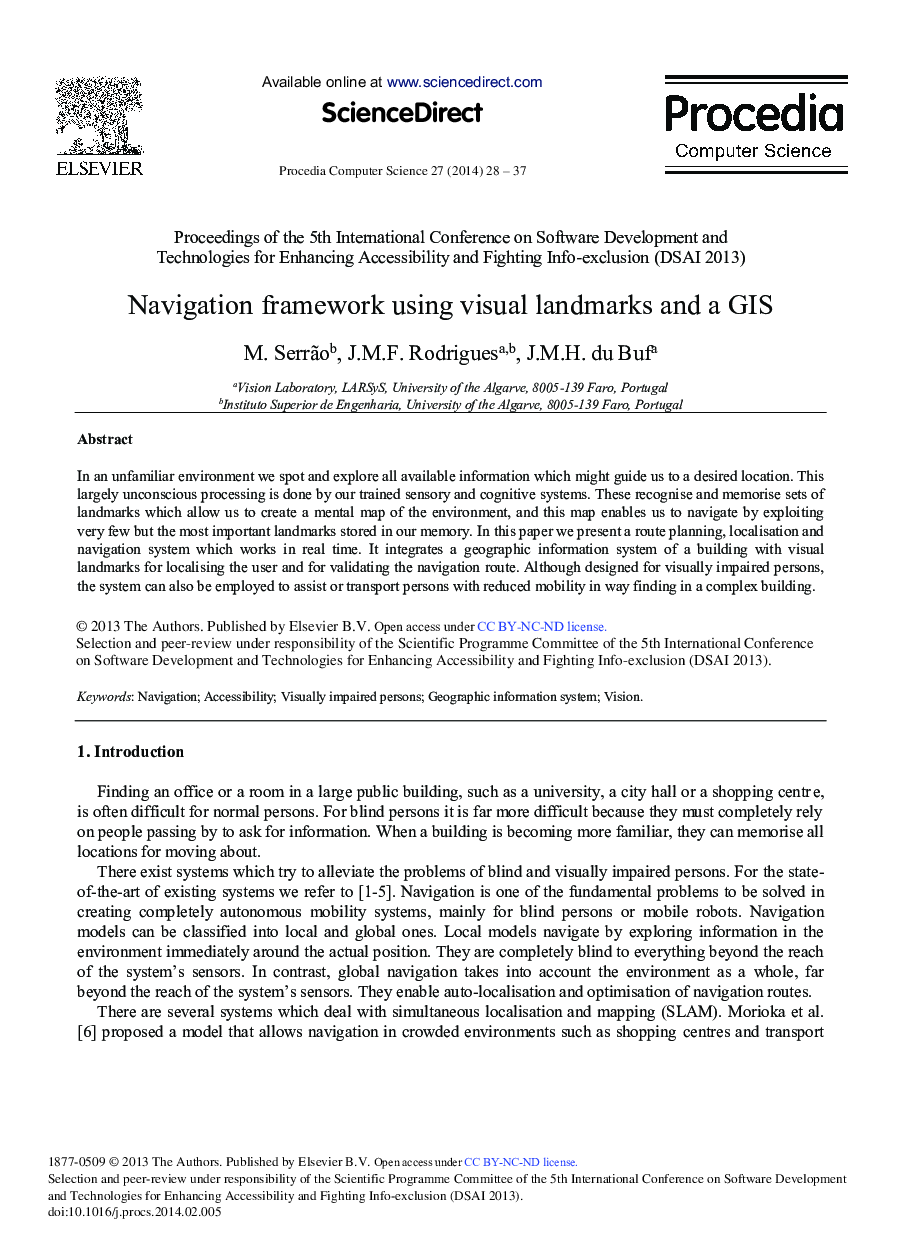| Article ID | Journal | Published Year | Pages | File Type |
|---|---|---|---|---|
| 485241 | Procedia Computer Science | 2014 | 10 Pages |
In an unfamiliar environment we spot and explore all available information which might guide us to a desired location. This largely unconscious processing is done by our trained sensory and cognitive systems. These recognise and memorise sets of landmarks which allow us to create a mental map of the environment, and this map enables us to navigate by exploiting very few but the most important landmarks stored in our memory. In this paper we present a route planning, localisation and navigation system which works in real time. It integrates a geographic information system of a building with visual landmarks for localising the user and for validating the navigation route. Although designed for visually impaired persons, the system can also be employed to assist or transport persons with reduced mobility in way finding in a complex building.
